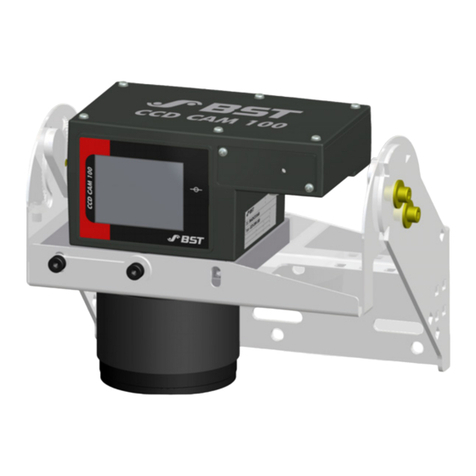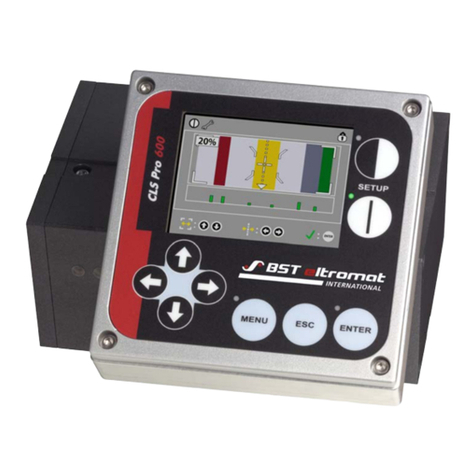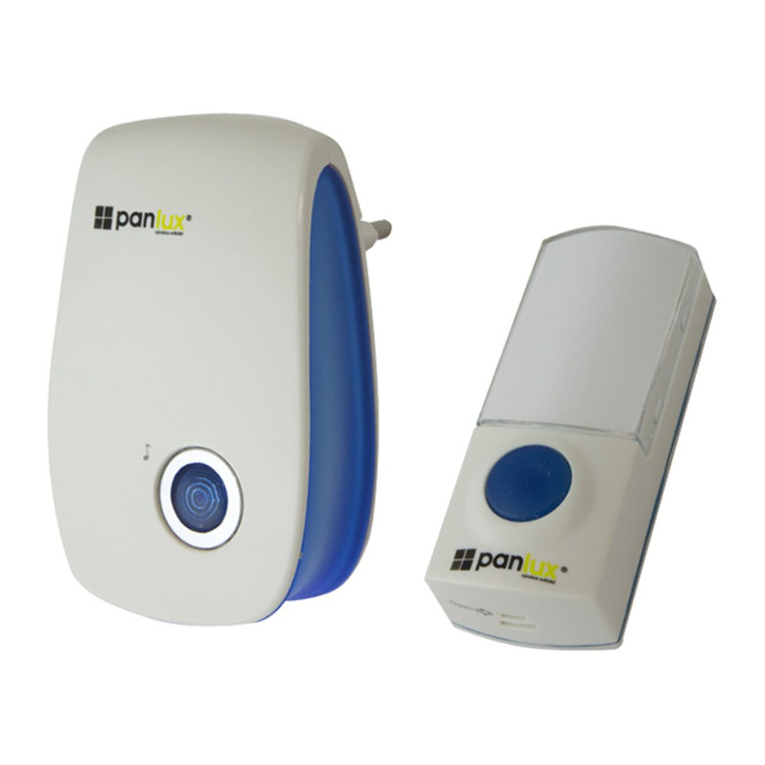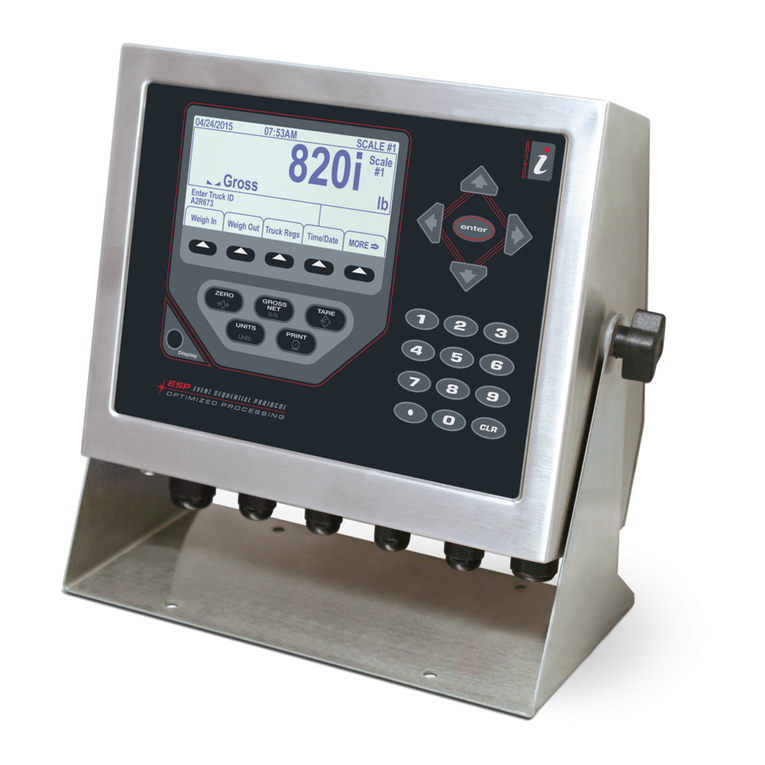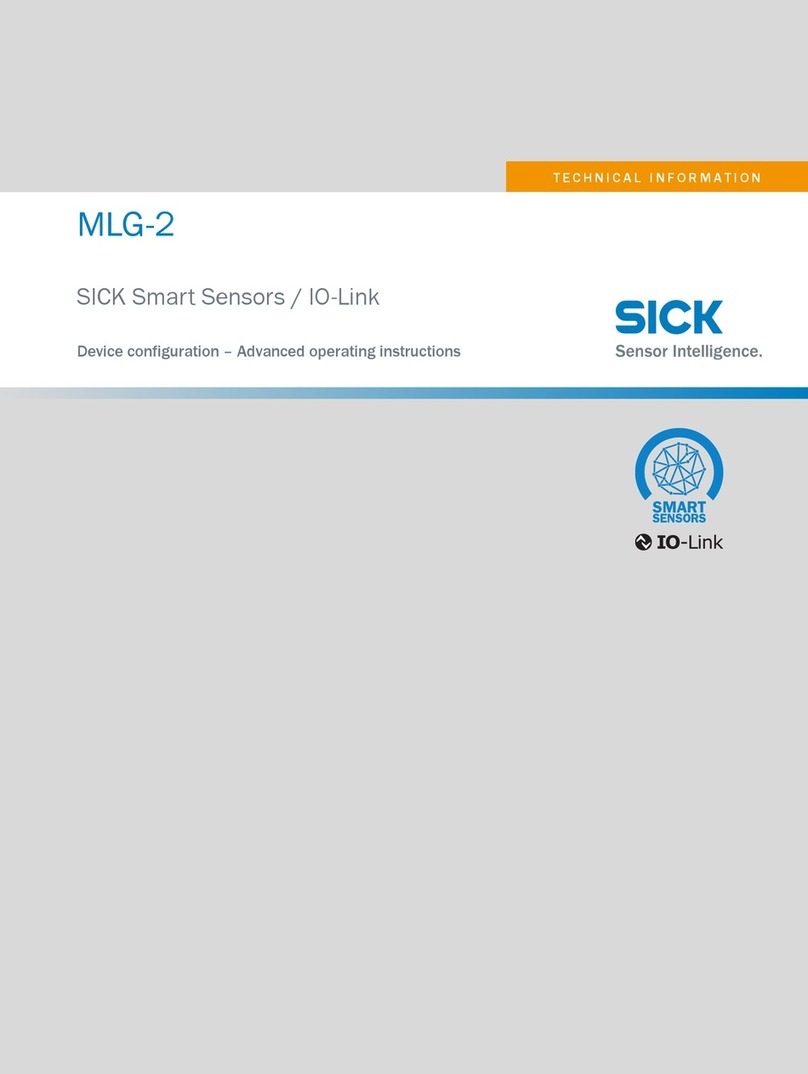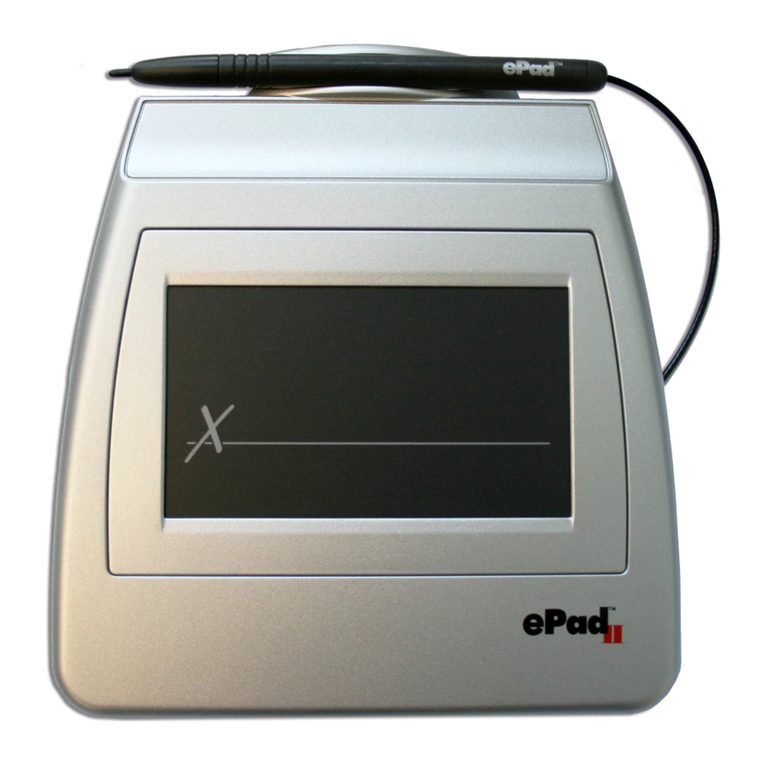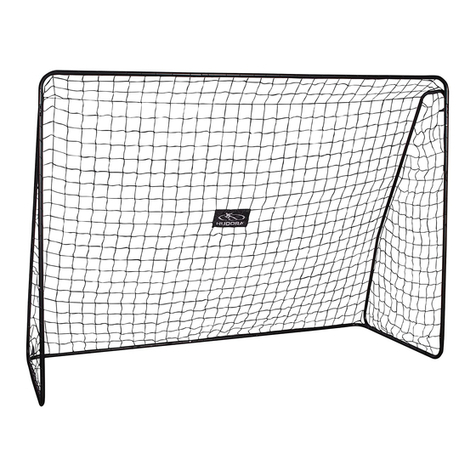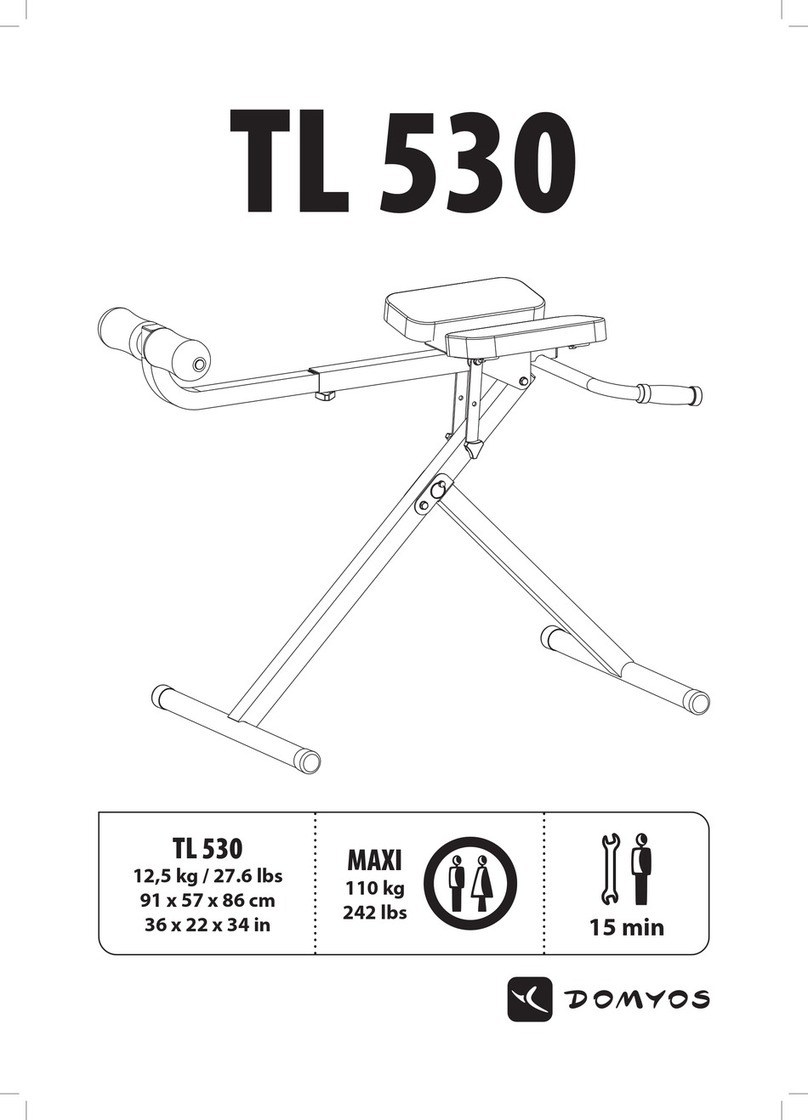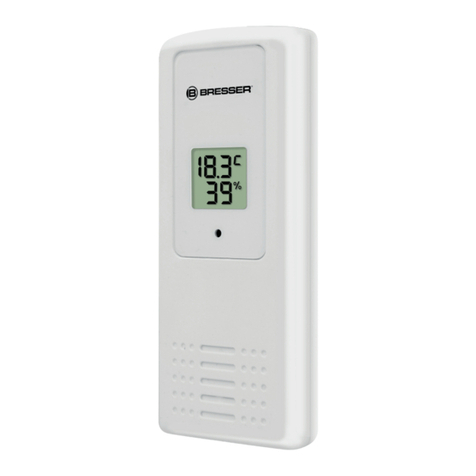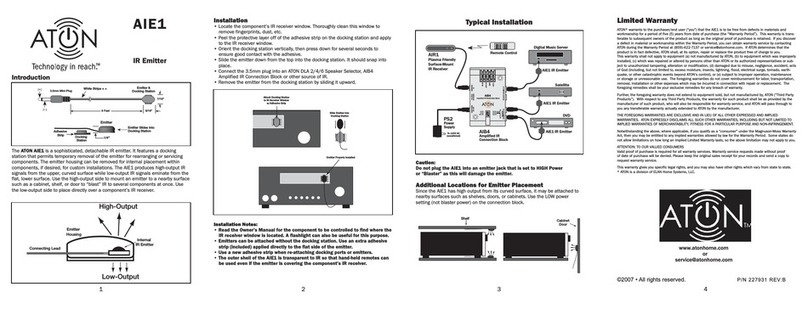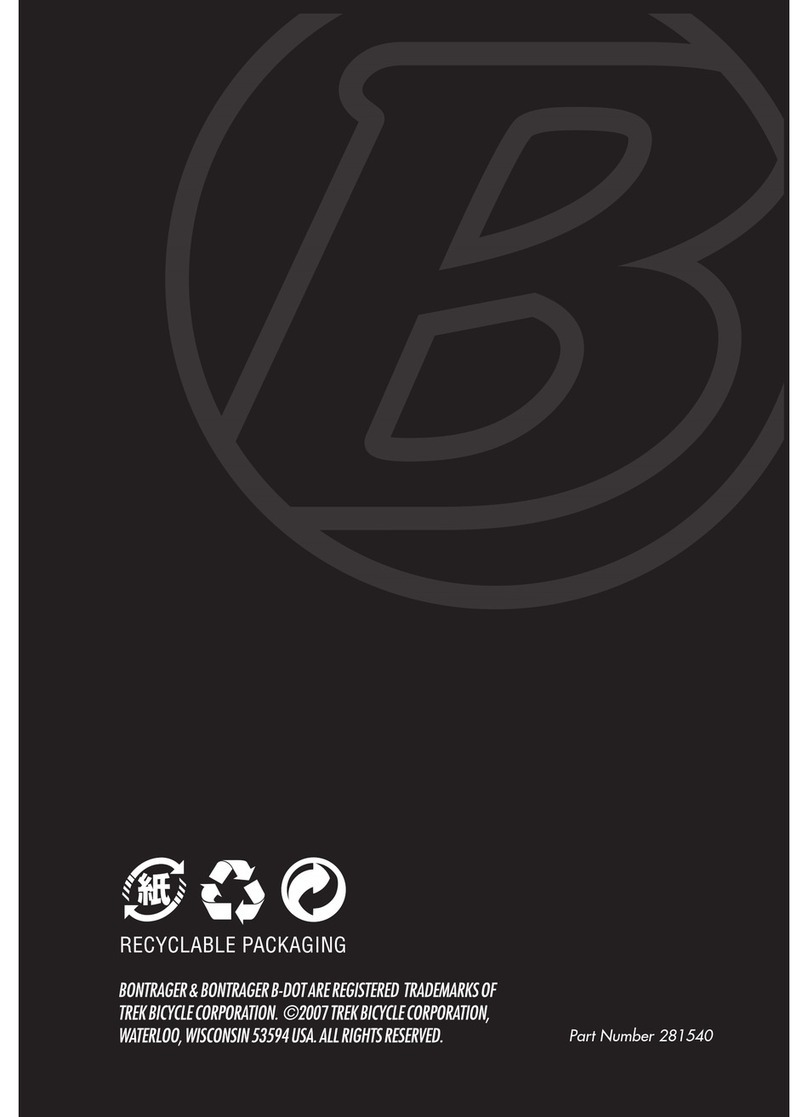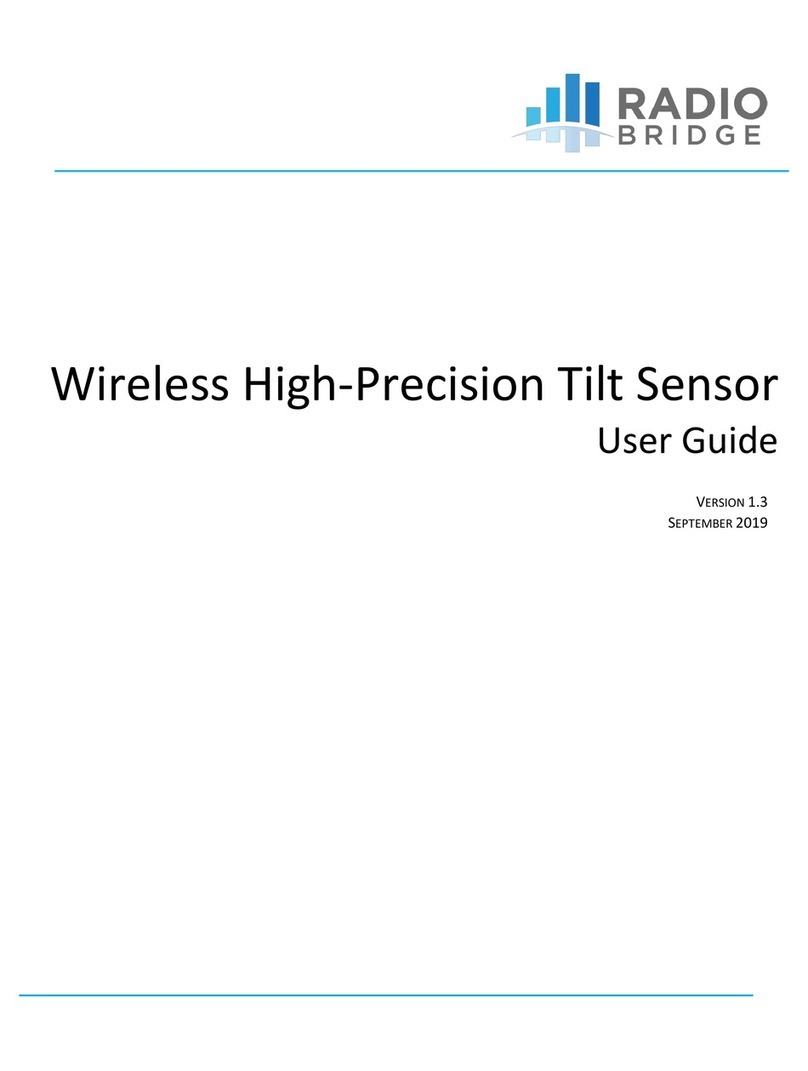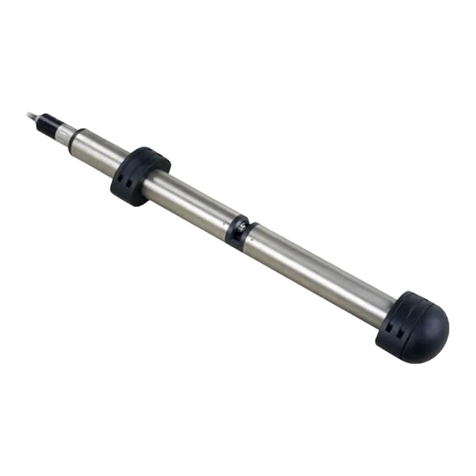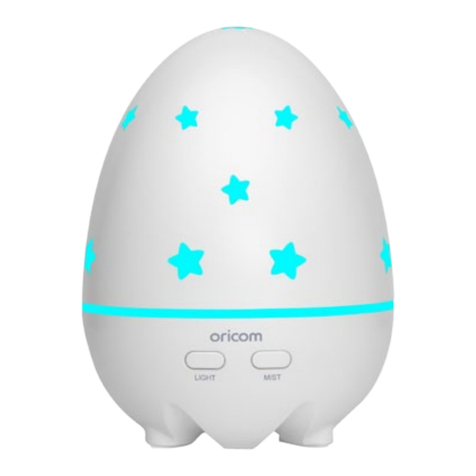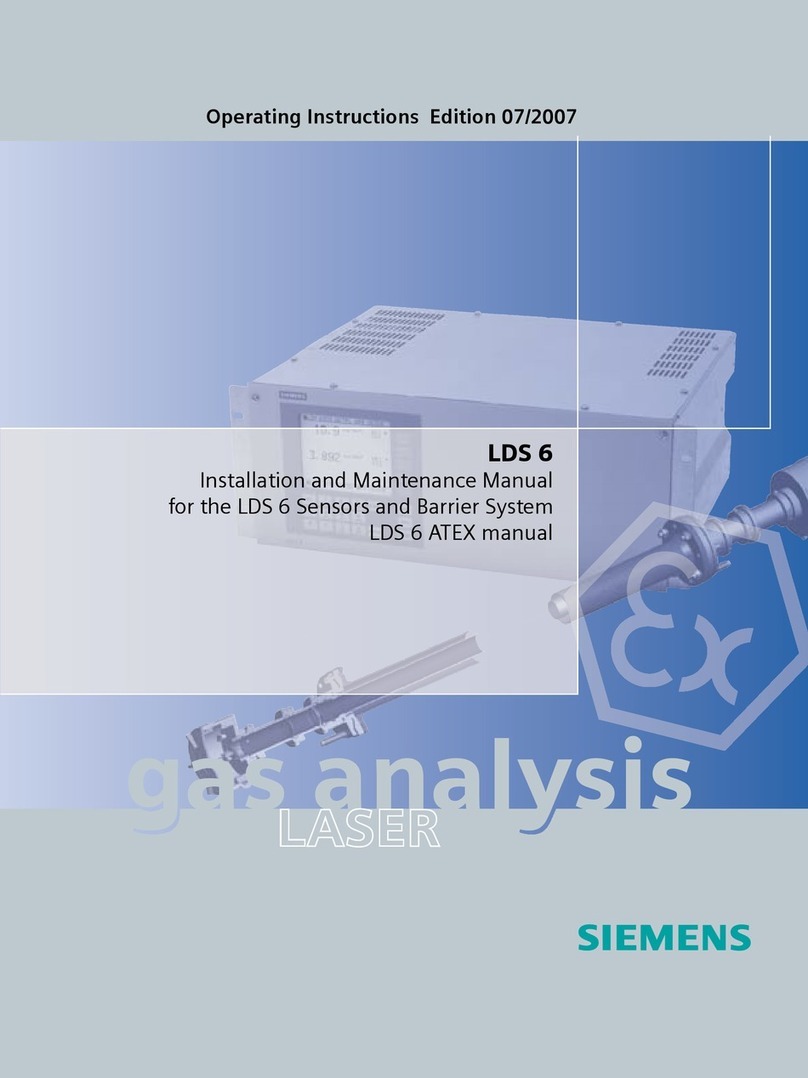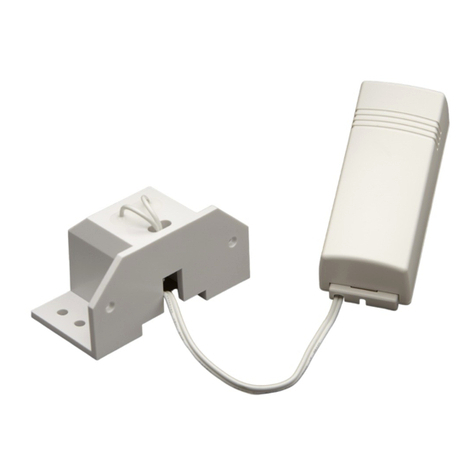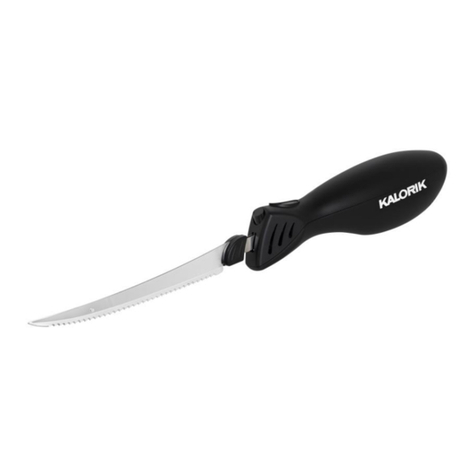BST RSH-EC User manual

Operating manual
register sensor
RSH-EC
9 9780500192
© BST eltromat International GmbH
Heidsieker Heide 53
33739 Bielefeld
Germany
2014

register
TOC
RSH-EC_TOC_en
Rev. . . - 08/20 4
ATEX identification and type plates ____________________________
1.1 ATEX identification ____________________________________ 1
1.2 Type plates ___________________________________________ 2
2EC Declaration of Conformity__________________________________ 4
3Technical data ______________________________________________ 5
4Warnings and safety instructions ______________________________ 6
4.1 General information ___________________________________
4.2 Qualified personnel ____________________________________
4.3 Warning of residual dangers ____________________________ 7
4.4 Intended use _________________________________________ 7
4.5 Designation___________________________________________ 8
4. Inadmissible use ______________________________________ 9
4.7 Structure of the safety instructions ______________________ 9
4.7.1 Warning of danger to persons ______________________ 10
4.7.2 Warning of damage to assets ______________________ 10
4.7.3 Other information ________________________________ 11
4.8 Liability _____________________________________________ 11
4.9 Warranty and guarantee _______________________________ 11
5Use of the operating manual _________________________________ 2
6Assembly and commissioning ________________________________ 3
.1 Prerequisites and warning information___________________ 13
.2 Components of the register sensor ______________________ 13
.2.1 Housing ________________________________________ 14
.2.2 Optical part with mechanical components ___________ 15
.2.3 Connection assignment ___________________________ 1
.3 Fitting ______________________________________________ 17
.3.1 Dimensions and space requirement ________________ 17
.3.2 Fitting the housing ______________________________ 17
.3.3 Installing the optical waveguide ___________________ 18
.4 Electrical commissioning/start-up of the register sensor____ 19
7Focusing the sensing head___________________________________ 20
8Replacing the lenses________________________________________ 2
Table of contents

register
RSH-EC_Cap_TOC_en
Rev. . . - 08/20 4
TOC
9Replacing the optical waveguide______________________________ 23
0 Adjustment of the register sensor _____________________________ 25
Cleaning the lenses _________________________________________ 27
2 Dismantling _______________________________________________ 28
3 Disposal __________________________________________________ 29
4 Error diagnosis with the aid of the status LEDs _________________ 30
14.1 Network LEDs ______________________________________ 30
14.2 Error and status LEDs _______________________________ 31
5 Replacing RSH by RSH-EC __________________________________ 34
AUse of an external sensor (option) ____________________________ 36
A.1 Safety instructions and ATEX identification ______________ 3
A.2 Connecting an external sensor (RSH-EC-FE/-EF-/E-/-EE) ___ 37
A.3 Connecting a camera sensor (RSH-EC-CS) _______________ 37
A.4 Components of the register sensor ______________________ 38
A.5 Mounting the register sensor ___________________________ 38
A. Irrelevant chapters ___________________________________ 38
Important: In case of using one of the five product variants
RSH-EC-E
,
RSH-EC-EE
,
RSH-EC-FE
,
RSH-EC-EF
and
RSH-EC-CS
begin reading
APPENDIX A!
Dokument-Info:
Name Datum
Erstellt / geändert H. Blockus 21.01.2009
Geprüft K. Reckefuß 0 .08.2008
Freigegeben K. Kemper 22.01.2009

register
RSH-EC_Cap_ _en
Rev. . - 07/20 3
ATEX identification and type plates
. ATEX identification
Review The complete ATEX identification is located on the type plate of the lens
system which is fitted to the fibre-optical interface ( see fig. 1.1).
The type plate contains the ATEX identification for the optical part.
Fig. .
ATEX identification
No .Symbol Description
The CE symbol means that a conformity evaluation process has
been carried out for the equipment. The equipment complies with
valid standards.
0123 Identification number of the specified authority (official quarters)
which has certified the quality assurance system according to 94/
9/EC.
The EX symbol means that the equipment was inspected with
regard to danger of explosion by an approved EC inspection
authority.
II The equipment classification is unit group II (electrical
equipment for explosive areas except mines).
2 Category 2 means that the equipment is suitable for zone 1.

register
RSH-EC_Cap_ _en
Rev. . - 07/20 3
2
.2 Type plates
Review The register sensor RSH-EC is equipped with two type plates: The type
plate of the complete register sensor is located on the sensor housing
bottom ( see fig. 1.1), the type plate of the lens system (fibre-optical
interface and optical waveguide) is located below the connection for the
optical waveguide ( see fig. 1.1).
Type plate, lens system
G Explosion group G means that the equipment can be used in areas
developing gas/vapour.
Ex op is Intrinsically safe optical radiation.
T4 The temperature classes group the gases and vapours according
to their ignition temperature. T4 identifies a maximum surface
temperature up to 135°C.
Gb Equipment protection level (EPL) Gb: The equipment is suitable
for use in potentially explosive areas due to gas and has a high
protection level. During normal operation or in the event of
expected, irregularly occurring faults, the equipment does not
represent an ignition source.
IIB The explosion subgroup specifies the gas and vapour types the
equipment is approved for. Subgroup IIB includes, amongst
others, ethyl acetate, city gas, acrylonitrile, ethylene, ethylene
oxide, etc.
No
.
Symbol Description
No .Description
Name and address of the manufacturer
Type, part number and series number of the unit
The CE symbol means that a conformity evaluation process has been carried
out for the equipment. The equipment complies with valid standards.
ATEX identification: Optical part.
0123 is the identification number of the specified authority (official
inspection authority) which has certified the quality assurance system
according to 94/9/EC.

register
RSH-EC_Cap_ _en
Rev. . - 07/20 3
3
Type plate
Register sensor
PTB inspection document number.
The X indicates that the prescribed application conditions specified in
chapter 9 are to be observed ( see chapter 9 OPTIK
AUSTAUSCHEN).
Minimum length of the optical waveguide: 3.2 m
No .Description
No .Description
Name and address of the manufacturer
Type, part number and series number of the unit as well as the logo of the
applied communication standard (for further information on the type
see chapter 3 TECHNICAL DATA)
The CE symbol means that a conformity evaluation process has been carried
out for the equipment. The equipment complies with valid standards.
Technical data:
Protection type:
IP 54
Electrical connection data:
24 V DC, 0.33 A
Temperature range:
Ta : 0°C ... 50°C.

register
4
RSH-EC_Cap_2_en
Rev. . - 05/20 3
2 EC Declaration of Conformity

register
5
RSH-EC_Cap_3_en
Rev. .0 - 05/20 3
3 Technical data
Review The following technical data is valid for the register sensor
RSH-EC
with
the optical waveguide variants specified below.
Type Housing / Electronics / Sensors
RSH-EC-F.x (Art.-Nr.: 95781-00140)
RSH-EC-FF.x (Art.-Nr.: 95781-00150)
RSH-LH-LL-0320S.x
RSH-LH-LL-0500S.x
RSH-EC-E
(Art.-Nr.: 95781-001 0)
RSH-EC-EE
(Art.-Nr.: 95781-00170)
RSH-EC-FE
(Art.-Nr.: 95781-00180)
RSH-EC-EF
(Art.-Nr.: 95781-002 0)
RSH-EC-CS
(Art.-Nr.: 95781-00300)
Basic unit 1 channel
Basic unit 2 channels
Optical waveguide 3,2 m com-
plete
Optical waveguide 5 m complete
Variants for the use of
external sensors
Supply Rated voltage LED
24 V DC (19.2 ... 27. V DC)
Rated current, electronics
approx. 0.33 A
Dimensions, weight Dimensions (W x H x D)
approx. 224 x 120 x 44 mm
(without connections)
Weight
approx. 0,75 kg
Environment Temperature range
0 ... 50 °C
Air humidity (relative)
10 ... 90 %, no condensation
Protection type IP 54
Standards EN 0079-0:2009
EN 0079-28:2007
EN 132 -1:200

register
6
RSH-EC_Cap_4_en
Rev. .0 - 02/20 2
4 Warnings and safety instructions
4. General information
This operating manual defines proceeding methods for
• proper installation and commissioning,
• safe operation,
• customer-provided service as well as
• dismantling and disposal
of the register sensor
RSH-EC
.
This operating manual also applies to the following register sensor
variants:
• 1- and 2-channel version (housing openings not required on
the 1-channel version are sealed by locking plates)
• Optical waveguide lengths in 3.2 m and 5.0 m
• Axial and angular head version of the optical waveguide
• Versions with one or two interfaces for the use of an external
sensor (
RSH-EC-E
,
RSH-EC-EE
,
RSH-EC-FE
,
RSH-EC-EF
and
RSH-EC-CS
).
Important: If you use one of these five variants, please
continue with reading appendix A of this operating manual
first!
Reading this operating manual attentively is indispensable for safe,
effective and fault free operation. Particularly ensure that the sections
qualified personnel and intended use are adhered to.
4.2 Qualified personnel
Only allow qualified personnel to install, operate and particularly carry
out service work on the register sensor. For the purpose of this docu-
mentation these are persons who:
• are familiar with the general safety regulations,
• are trained to handle electrical units,
• are trained by the owner/user based on the ATEX EC directives
94/9/EG and 99/92/EG,
• have familiarised themselves with this operating manual.

register
RSH-EC_Cap_4_en
Rev. .0 - 02/20 2
7
4.3 Warning of residual dangers
Danger of explosion! Only qualified personnel with knowledge concerning
explosion protection are permitted to perform system interventions.
Danger of explosion!
• Do not srew the lenses off from the sensing head as long as it is
switched on. Non-observance will result in danger of explosion caused
by the high light performance (ignition source).
• Only switch on the register sensor when the grounding cable of the
housing is connected to an equipotential bonding.
• Ensure absolute cleanliness during replacement work! Ensure that
no absorptive substances (e.g. dust) are on the optical waveguide
outlet surface and in the lenses. Use compressed air or a lint free
cloth to remove soiling.
Prior to starting fitting work, ensure that the lens components are
clean by a visual inspection. Non-observance can result in ignition
of the substances by the high light performance and, thus, cause an
explosion ( see chapter 8 REPLACING THE LENSES).
• Regularly check the optical waveguide for damage. Replace damaged
optical waveguides to re-establish the conductive connection!
•CAUTION! Optical radiation! Never look unprotected into the LED
light source or the lenses when the register sensor is switched on.
Otherwise, there is a risk of temporary vision impairment.
Stop!
• Damage caused by work on live parts is possible! Always isolate the
complete register controller prior to starting work on the register
sensor! Only allow electricians to carry out work on the electrical
components!
• Sensitive components are installed inside the register sensor housing.
Do not touch any components installed on the sensor board !
• Certain system components which may carry electrical voltage (< pro-
tective low voltage) are accessible after opening housings or removing
contact protection devices.
4.4 Intended use
•The register sensor
RSH-EC
is exclusively intended for use on printing
presses and their tool stations. As a sensor for the connected register
controller, it serves for the opto-electrical detection of print marks.
• Installation and operation are only permissible in closed production
facilities.
EX
STOP

register
RSH-EC_Cap_4_en
Rev. .0 - 02/20 2
8
• The application locations are partly explosive areas on printing
presses:
• The optical register sensor components (optical waveguide
and lenses) are approved for use in explosive areas. These
components comply with the housing category 2G and are
thus approved for being operated in zone 1.
• The housing has no explosion protection approval and must
only be used outside of explosion protection zones.
• Ensure that installation, operation and service work are carried out
as described in the operating manual.
• Perfect and safe operation of the register sensor requires correct
transport, assembly and installation as well as careful operation and
correct maintenance and repair.
• In special individual cases adhere to the currently valid safety and
accident prevention regulations when operating this system.
• The register sensor described in the operating manual has been
developed, manufactured, tested and documented on the basis of
the currently valid safety standards. For this reason, under normal
circumstances no danger to health or damage to assets can result.
• Only use original BST eltromat spare parts when carrying out service
work. Only this will ensure that function safety is maintained and the
limit values relevant for explosion protection are met (radiation at
the lens system opening).
• Unauthorised modifications (mechanical / electrical) are expressively
forbidden. The warranty will automatically become null and void if
the register sensor is modified in any way.
• The optical waveguides are sensitive, optical components. Never
expose the optical waveguides to mechanical stress (e.g. pulling,
bending, crushing or twisting).
4.5 Designation
• The type plate clearly identify the system ( see chapter 1.2
TYPE PLATES).
• ATEX identification ( see chapter 1 ATEX IDENTIFICATION
AND TYPE PLATES).
• Refer to the EC Conformity Declaration for the CE symbol of identi-
fication
( see chapter 2 EC DECLARATION OF CONFORMITY).
•System manufacturer: BST eltromat International GmbH
Heidsieker Heide 53
D-33739 Bielefeld

register
RSH-EC_Cap_4_en
Rev. .0 - 02/20 2
9
4.6 Inadmissible use
Any use other than that specified under intended use is considered as
inadmissible ( see chapter 4.4 INTENDED USE).
The warranty concerning function and protection type will become null
and void when the register sensor is used in another manner than that
intended. The manufacturer will not assume any liability for possible
damage resulting from inadmissible use.
• Do not install the housing in explosion protection zones.
• Do not open the lens system in explosion protection zones when the
register controller is switched on.
• Do not operate the register controller with a damaged optical wa-
veguide because electrical leakage cannot be ensured.
• Ensure that no absorptive substances (e.g. dust) enter the lens
system. When switched on, the high light performance can ignite
these substances. Ensure absolute cleanliness during replacement
work on the lens system!
• Do not switch on the register controller unless the equipotential
bonding (grounding) on the housing is connected.
• Immediately replace the lens system by an original lens system in
the event of mechanical damage.
• The register sensor is not suitable for lighting purposes.
• Never use an optical waveguide for fastening purposes.
• Never step on the housing or use it as a tool.
4.7 Structure of the safety instructions
The safety instructions in this operating manual are of a uniform structure
in accordance with the following examples.
Signal word! Information text
• The pictograph indicates the type of danger.
• The signal word indicates the severity of the danger.
• The information text describes the individual danger and provides
instructions of how to avoid danger.

register
RSH-EC_Cap_4_en
Rev. .0 - 02/20 2
0
4.7. Warning of danger to persons
Pictographs
Signal words
DANGER! Warns of imminent danger. Consequences of non-observance: Death or
serious injury.
WARNING! Warns of a possibly very dangerous situation. Possible consequences of
non-observance: Death or serious injury.
CAUTION! Warns of a possibly dangerous situation. Possible consequences of non-
observance: Slight, minor injuries.
4.7.2 Warning of damage to assets
Pictograph
Signal word !
STOP! Warns of possible damage to assets. Possible consequences of non-
observance: Damage to the plant or its surroundings.
Warning of dangerous electrical voltage.
Warning of general danger.
Warning: Danger of explosion.
Warning: Optical radiation.
Warning of possible damage to assets.
STOP

register
RSH-EC_Cap_4_en
Rev. .0 - 02/20 2
4.7.3 Other information
Pictographs The following pictographs are used in the documentation:
4.8 Liability
The supplied documentation was created with utmost care. Deviations,
however, may occur due to the continuous development of the described
component. If errors are detected in the documentation or in the event
of updated according to the technical progress, we reserve the right for
modifications at any time and without prior announcement. No claims
can be made for modification or correction on components already
delivered.
Furthermore, the General Sales and Delivery terms of BST eltromat apply.
4.9 Warranty and guarantee
The General Sales and Delivery terms of BST eltromat as well as the
terms of the individual order apply.
Additional information, instructions and tips.
Cross reference to further and/or related chapters with details of the
chapter number and chapter heading.
Disposal information.

register
2
RSH-EC_Cap_5_en
Rev. .0 - 02/20 2
5 Use of the operating manual
Introduction This operating manual describes the register sensor
RSH-EC
.
Particular
importance is placed on the representation of individual operating steps.
Due to the uniform grouping in preparatory work, operating steps and
final tasks, maintenance can be carried out safely and effectively.
Information/instructions concerning safety and the required aids are
additionally provided.
Page layout The page layout is in two columns. It consists of the left review column
and the right text and image column.
Left column • Reviews, informations, symbols, figure numbers
• Enables a quick and objective-dependant search
• Optical display, coloured highlighting of operating steps
• Direct references to relevant paragraphs in the right column
Right column • Contains the instruction text and, if required, paragraph titles/headers
• Contains operating processes and figures
Style The following style is used to ensure a better legibility of the operating
manual:
Bold print
• Texts in the left column
• Titles/headers
• Special notes
Bold & Italic
• Product names
Pictographs
Operation: Description of the operating steps and the preparatory work
and final tasks. The left review column or the text background is
additionally colour-highlighted in this area.
Reference to additional information, tips and advice.
Cross reference to further and/or related chapters with details of the
chapter number and chapter heading.

register
3
RSH-EC_Cap_6_en
Rev. .0 - 02/20 2
6 Assembly and commissioning
6. Prerequisites and warning information
•Warning! Only allow qualified expert personnel with knowledge about
explosion protection to carry out service work ( see chapter
4.2 QUALIFIED PERSONNEL)!
• Switch off the connected register controller system during
assembly.
• Only carry out assembly as detailed in the operating manual.
• The housing has no explosion protection approval and must only be
used outside of explosion protection zones.
• The optical register sensor components (optical waveguide and
sensing head) are approved for use in explosive areas. These com-
ponents comply with the device category 2G and are thus approved
for being operated in zone 1.
• Unauthorised modifications (mechanical / electrical) are expressi-
vely forbidden. The warranty will automatically become null and void
if the register sensor is modified in any way.
• The optical waveguides are sensitive, optical components. Never
expose the optical waveguides to mechanical stress (e.g. pulling,
bending, crushing or twisting).
• Danger of explosion! Immediately replace the lens system in the event
of mechanical damage.
6.2 Components of the register sensor
Review The register sensor (mainly maintenance-free) consists of a housing and
an optical part which is attached to the printing press by means of a
holder (traverse bar). The following figure (Fig. .1) shows the register
sensor including its mechanical components.

register
RSH-EC_Cap_6_en
Rev. .0 - 02/20 2
4
6.2. Housing
Fig. 6.
Connections not required must be closed. When the optional fibre-optical
interface for optical waveguide channel 2 ( ) is not fitted, a cover plate
is provided at this point.
Components Fibre-optical interface with connection for optical waveguide chan-
nel 1
Option: Fibre-optical interface with connection for optical wa-
veguide channel 2
Input for voltage supply cable
Output for voltage supply cable
Input for field bus
Output for field bus
Type plate for optical compo-
nent
Sensing head
PE connection (equipotential
bonding)
Status LEDs
Type plate for
register sensor

register
RSH-EC_Cap_6_en
Rev. .0 - 02/20 2
5
6.2.2 Optical part with mechanical components
Fig. .2 shows the mechanical components of the register sensor
RSH-
EC
and the traverse bar.
Fig. 6.2
Components Traverse bar (various mechani-
cal mountings available)
Locking screws for sensing
heads
Adjustment ring (depth stop for
focusing)
Register sensor holder with he-
xagonal bar for depth adjust-
ment (various mechanical versi-
ons available)
Locking screw for depth adjust-
ment
Slide for lateral adjustment
Optical waveguide (optical part) Optical waveguide guidance
(also available as energy chain
version)
Sensing head,
channel 1: green ring,
channel 2: red ring
Clamping lever

register
RSH-EC_Cap_6_en
Rev. .0 - 02/20 2
6
6.2.3 Connection assignment
Review The register sensor housing is equipped with inputs and outputs for the
voltage supply and field bus. The type and assignment of these connec-
tions are described in this chapter.
Field bus The field bus connections are designed as four-pole, D coded M12 plug
connectors.
Input field bus X (socket) Output field bus X2 (socket)
Fig. 6.
Voltage
supply
The connections for the voltage supply are designed as five-pole, D coded
M12 plug connectors.
Input voltage supply Output voltage supply
X3 (plug) X4 (socket)
Fig. 6.
Assignment TD+
RD+
TD-
RD-
Housing (screen)
Assignment 24 V ULS (24 V)
24 V UA (only bridged)
0 V ULS (mass)
0 V UA (only bridged)
Only at output X4: AMR-Out
Housing (screen)

register
RSH-EC_Cap_6_en
Rev. .0 - 02/20 2
7
6.3 Fitting
Only fit the housing in the prescribed manner.
6.3. Dimensions and space requirement
• The space requirement for the housing and the connections is
240 mm x 135 mm (any fitting position).
• Two M tapped holes are required for fastening
(Spacing: 201.5 mm).
Fig. 6.2
6.3.2 Fitting the housing
Perform the following operating steps:
•Select a suitable fitting position for the housing (no explosive
area).
Ensure that the electrical connections of the housing and the
optical waveguide end parts are outside of any explosive area.
• Prepare holes for fastening according to Fig. .3.
• Screw-fit the housing to the fitting position
(2 Allen screws M ).
240
135
201,520,25
67,5
M5
135
223,5
12
59,25
240
135
67,5
120
hole pattern for mounting suface
Bohrbild für Montagefläche
Dimensions [mm]
72,2
38
2264,7
[Ex op is] only optical part
Freig.
Bear.
Datum Name
Maßstab (Gewicht)
1:1
[Ex op is] nur optischer Teil
eltromat GmbH
available to a third party or company.
must neither be copied or duplicated nor be made
This documentation is protected by copyright and
eltromat GmbH
Firmen zugänglich gemacht werden.
vervielfältigt, noch sonstwie dritten Personen oder
13715
ISO
Kanten
ISO 2768-mK
RSH-PN- Registermarkensensor
TSpruetten18.03.2011
Diese Unterlage ist urheberrechtlich geschützt. Sie
darf ohne unsere Einwilligung weder kopiert,
Allgemein-
toleranz
Freiraum für Anschlußkabel
free space for connecting cable
65
26
44
84
162
free mounting area
freie Montagefläche
Erdungsanschluß M5
earth connection M5
201,5
118,5
Table of contents
Other BST Accessories manuals

